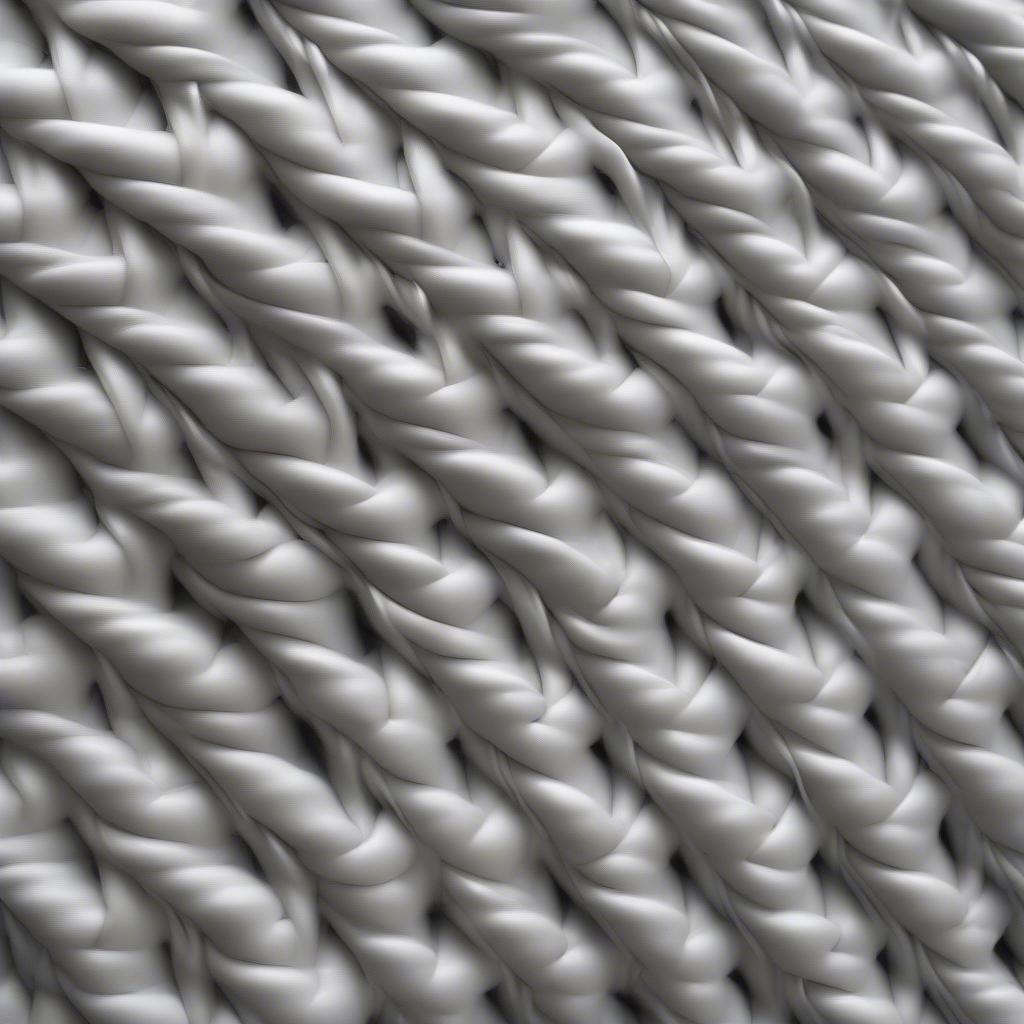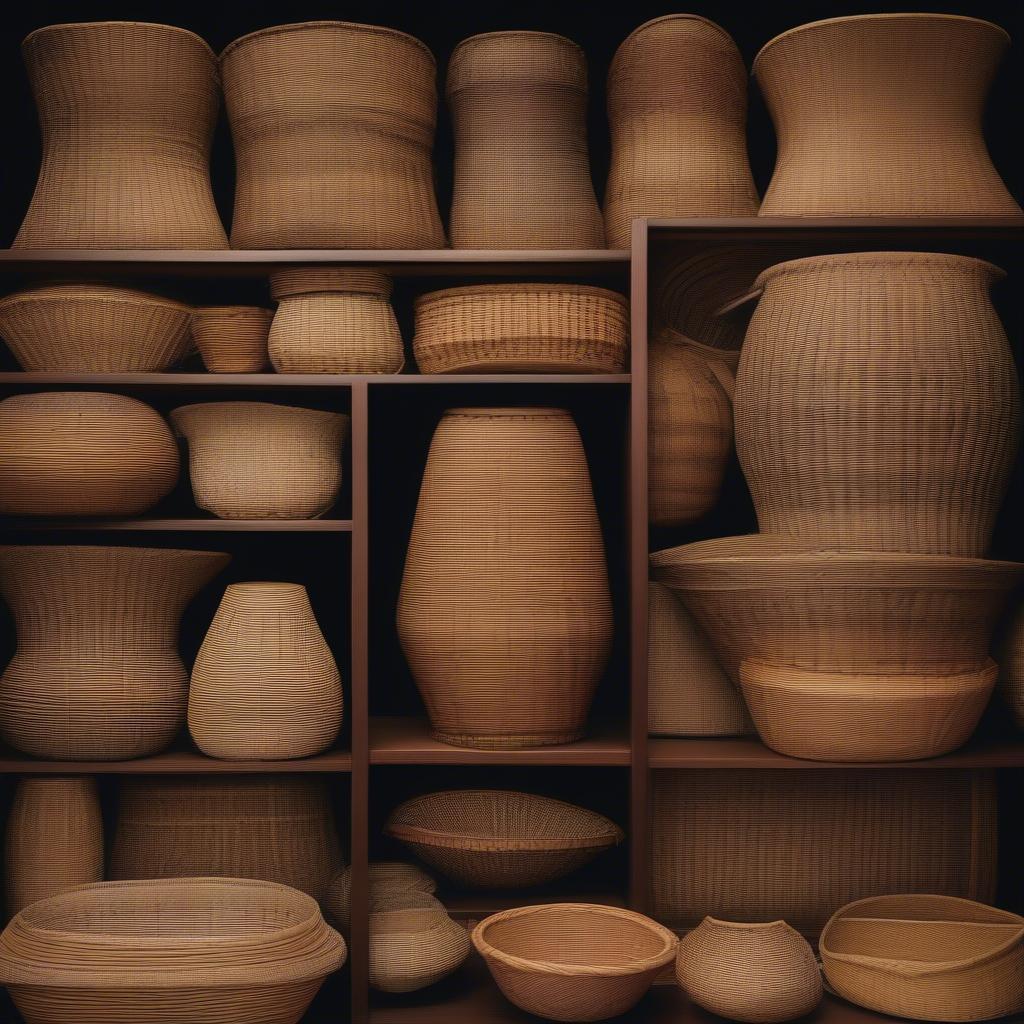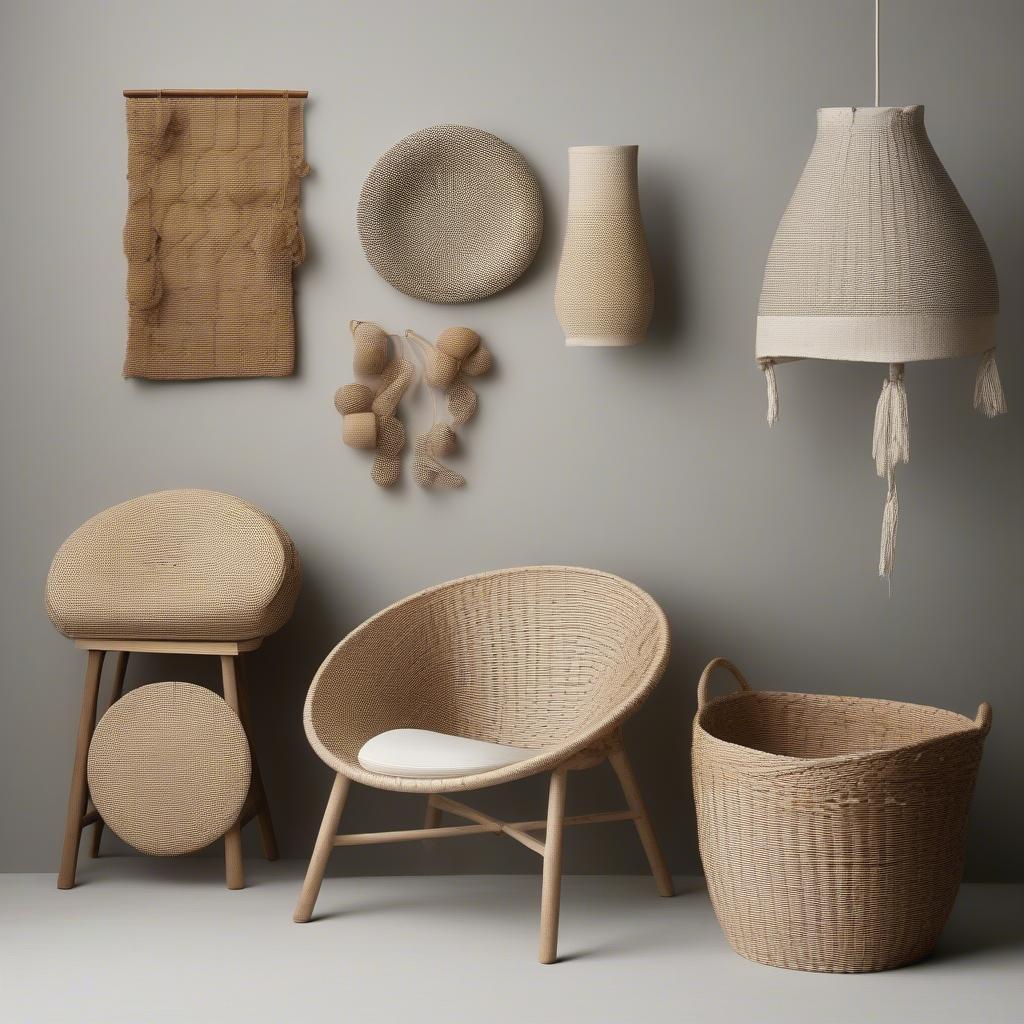Basket Weaving
Mastering the Ribbed Basket Weave: A Comprehensive Guide
Ribbed Basket Weave is a beautiful and versatile weaving technique that adds a touch of elegance and texture to any basketry project. From traditional crafts to modern designs, this technique allows for a stunning array of patterns and possibilities. This guide will delve into the intricacies of ribbed basket weave, exploring its history, techniques, and creative applications.  Close-up view of a ribbed basket weave pattern showing the distinct vertical ribs and the interwoven weft material.
Close-up view of a ribbed basket weave pattern showing the distinct vertical ribs and the interwoven weft material.
Understanding the Basics of Ribbed Basket Weave
Ribbed basket weave, also known as rib weave, is characterized by its prominent vertical ribs, formed by groups of stakes or weavers. These ribs provide structural integrity and create a visually appealing texture. weaving-a-rib-basket The weft material is woven over and under these ribs, creating a variety of patterns and effects. This technique can be used with a wide range of materials, from willow and rattan to more contemporary materials like reed and even synthetic fibers. The ribbed effect adds a distinct touch, making it suitable for both functional baskets and decorative pieces.
History and Origins of Ribbed Basket Weaving
The history of ribbed basket weaving is intertwined with the broader history of basketry itself. Evidence suggests that rib weaving techniques have been used for centuries in cultures around the world. From ancient Egyptian baskets used for storage and transport to intricate Native American designs used in ceremonial practices, the ribbed basket weave has played an essential role in human history.  A collection of antique ribbed baskets from different cultures, showcasing the historical use and variety of this weaving technique.
A collection of antique ribbed baskets from different cultures, showcasing the historical use and variety of this weaving technique.
Different Types of Ribbed Basket Weave
While the basic principle of ribbed basket weave remains the same, there are numerous variations and patterns that can be achieved. These variations often involve changing the number of stakes per rib, the spacing between ribs, or the way the weft is woven. Some popular variations include:
- Single Rib Weave: This is the most basic form, where each rib consists of a single stake.
- Double Rib Weave: Here, two stakes are used to form each rib, creating a more pronounced texture.
- French Rib Weave: This variation creates a tighter, more compact weave.
- Wale Weave: Similar to rib weave, but typically uses wider and flatter materials, resulting in a different aesthetic.
Choosing the Right Materials for Ribbed Basket Weaving
The materials you choose will greatly impact the final look and feel of your ribbed basket. Natural materials like willow, rattan, and reed offer a traditional aesthetic and unique properties. Willow is flexible and easy to work with, making it a good choice for beginners. Rattan is strong and durable, ideal for larger baskets. Reed is more rigid and creates a distinct texture. ribbed-basket-weave-curtains Synthetic materials can also be used, offering increased durability and a wider range of colors.
Weaving a Ribbed Basket: A Step-by-Step Guide
Learning the ribbed basket weave requires patience and practice. Here’s a simplified guide to get you started:
- Prepare your materials: Soak your chosen material to make it pliable.
- Create the base: Form a circular or oval base using your chosen weaving technique.
- Establish the ribs: Group your stakes to form the ribs, ensuring even spacing.
- Begin weaving: Weave the weft material over and under the ribs, following your chosen pattern.
- Shape the basket: As you weave, gradually shape the basket into the desired form.
- Finish the rim: Secure the ends of the weavers to create a neat and finished rim.
“The beauty of ribbed basket weave lies in its simplicity and versatility. With a little practice, anyone can create stunning and functional baskets using this timeless technique.” – Maria Rodriguez, Master Basket Weaver
Exploring Creative Applications of Ribbed Basket Weave
Ribbed basket weave isn’t limited to traditional baskets. It can also be used to create a variety of other items, such as:
- Wall hangings: Create decorative wall art with unique ribbed patterns.
- Furniture: Incorporate ribbed weaving into chair seats, tabletops, and other furniture pieces.
- wv-artist-of-basket-weaving Sculptures: Use the technique to create three-dimensional art pieces.
- Fashion accessories: Incorporate ribbed weaving into bags, hats, and jewelry.
- Home decor: Create lampshades, trays, and other decorative items.
 Examples of modern furniture and home decor items incorporating the ribbed basket weave, showcasing its versatility and contemporary applications.
Examples of modern furniture and home decor items incorporating the ribbed basket weave, showcasing its versatility and contemporary applications.
Conclusion
Ribbed basket weave is a captivating and versatile technique that offers endless creative possibilities. From traditional baskets to contemporary designs, bakery-basket-weaving-pattern-scarbrough the ribbed texture adds a touch of elegance and sophistication. By understanding the basics and exploring different variations, you can master this timeless craft and create your own unique pieces. basket-weaving-courses-near-me So, gather your materials and embark on a journey of creativity and craftsmanship with the art of ribbed basket weaving.
“Ribbed basket weave is more than just a technique; it’s a connection to the past and a celebration of craftsmanship. Each rib tells a story, woven with skill and passion.” – John Smith, Basketry Historian
When you need assistance, please contact us at Hanoi, Vietnam or Tech Avenue, Suite 12, San Francisco, CA 94105, USA. We have a 24/7 customer service team.
